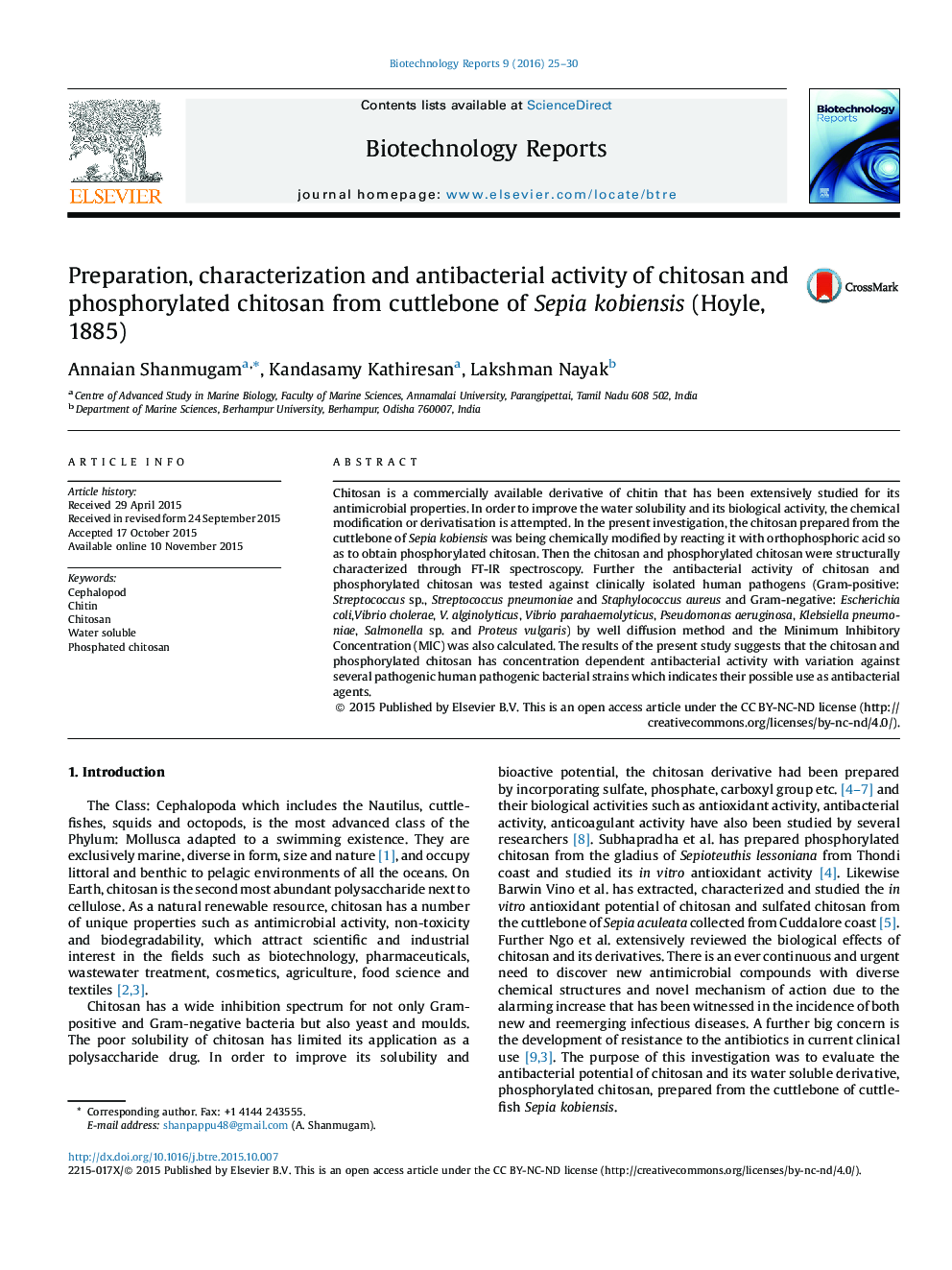| Article ID | Journal | Published Year | Pages | File Type |
|---|---|---|---|---|
| 870617 | Biotechnology Reports | 2016 | 6 Pages |
Chitosan is a commercially available derivative of chitin that has been extensively studied for its antimicrobial properties. In order to improve the water solubility and its biological activity, the chemical modification or derivatisation is attempted. In the present investigation, the chitosan prepared from the cuttlebone of Sepia kobiensis was being chemically modified by reacting it with orthophosphoric acid so as to obtain phosphorylated chitosan. Then the chitosan and phosphorylated chitosan were structurally characterized through FT-IR spectroscopy. Further the antibacterial activity of chitosan and phosphorylated chitosan was tested against clinically isolated human pathogens (Gram-positive: Streptococcus sp., Streptococcus pneumoniae and Staphylococcus aureus and Gram-negative: Escherichia coli, Vibrio cholerae, V. alginolyticus, Vibrio parahaemolyticus, Pseudomonas aeruginosa, Klebsiella pneumoniae, Salmonella sp. and Proteus vulgaris) by well diffusion method and the Minimum Inhibitory Concentration (MIC) was also calculated. The results of the present study suggests that the chitosan and phosphorylated chitosan has concentration dependent antibacterial activity with variation against several pathogenic human pathogenic bacterial strains which indicates their possible use as antibacterial agents.
